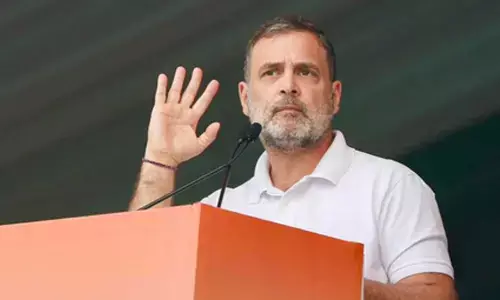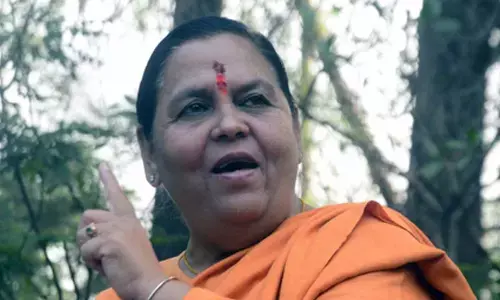A Global Power in the Making

With a 7% GDP growth rate and forex above $700 billion, India’s economy is swiftly enhancing its global influence
While India’s international outreach is a key indicator of its rising global stature, the domestic outlook remains equally promising. The World Bank’s recent India Development Update (IDU) highlighted this transformation, projecting a robust 7% GDP growth rate for FY 2024-25 and affirming India as the fastest-growing major economy. Complementing this growth, the government has committed to maintaining strong fiscal support for infrastructure over the next five years
New Delhi: In a bustling market in Mumbai, vendors are selling fresh produce as small nondescript boxes announce the customers’ digital payments, adding to the riveting cacophony of Hindi, English, and Marathi. This vibrant scene captures a nation in motion, a country whose economy has been breaking records and is forecast to soar in the years ahead.
According to renowned Harvard professor Larry Summers, India stands on the verge of an economic transformation unlike any other. “I am hopeful that between now and the 100th anniversary of India’s independence, the Indian economy could grow sixfold from its current level. And I think India has the very great prospect of being the most rapidly growing significant economy in the world over the next five years, the next ten years, and the next generation,”
As of October 2024, India’s foreign exchange (forex) reserves have swelled to $701 billion, making it only the fourth country in the world to cross the $700 billion mark, after China, Japan, and Switzerland. This milestone signifies not just a stockpile of wealth but the country’s growing ability to navigate global financial uncertainties and support its trade and investment needs. Since January 2024 alone, these reserves have surged by $84 billion. These reserves represent a crucial buffer allowing India to confidently engage on the world stage. Summers remarked, “Today, India has $600 billion (now $701 billion) in reserves and is a generous provider of support to countries around the world.”
This is exemplified by initiatives like the Vaccine Maitri programme, which delivered over 30 crore doses of COVID-19 vaccines to 99 countries as of August 2, 2024, solidifying India’s role as a global leader in healthcare diplomacy and showcasing its capacity to exert soft power through economic strength. While India’s international outreach is a key indicator of its rising global stature, the domestic outlook remains equally promising. The World Bank’s recent India Development Update (IDU) highlighted this transformation, projecting a robust 7% GDP growth rate for FY 2024-25 and affirming India as the fastest-growing major economy. Complementing this growth, the government has committed to maintaining strong fiscal support for infrastructure over the next five years.
In the Union Budget 2024-25, an allocation of ₹11,11,111 crore for capital expenditure has been made, equivalent to 3.4 percent of GDP. This represents a substantial increase from the capital expenditure of ₹4.1 lakh crore in 2020-21, showcasing the government’s enhanced focus on infrastructure development while emphasizing fiscal consolidation and other priorities.
This infrastructure support is complemented by building a conducive and stable environment to attract businesses and entrepreneurs. The launch of the Make in India initiative in 2014 marked a pivotal shift toward establishing the country as a global manufacturing hub. Vande Bharat Trains, a testament to the prowess of Indian manufacturing, are the country’s first indigenous semi-high-speed trains. They offer modern, state-of-the-art travel experiences and showcase the nation’s growing expertise in advanced rail technology, with 102 operational train services.
India’s manufacturing sector achieved a significant milestone by becoming the world’s second-largest mobile manufacturer, producing 99.2% of smartphones sold in the domestic market. In 2023-24, India’s mobile phone exports touched approximately ₹1.2 lakh crore, reflecting a remarkable increase of 77 times from 2014-15. Furthermore, India’s defence production soared to ₹1.27 lakh crore in 2023-24, with defence exports crossing ₹21,000 crore and reaching over 90 countries. Supplementing these achievements, India’s overall merchandise exports reached $437.06 billion in FY 2023-24, highlighting its expanding role in global trade. As the nation’s industrial growth propels its export capabilities, India’s digital transformation is also playing a pivotal role in its economic evolution. UPI payments have skyrocketed from 92 crore transactions in FY 2017-18 to over 13,000 crores in FY 2023-24, a compound annual growth rate of 129%. With UPI now a global benchmark for digital payments, India’s digital transformation has become a case study for global emulation.
The success of India’s economic reforms and digital initiatives has not gone unnoticed. Between 2014 and 2020, India rose from 142nd to 63rd in the World Bank’s Ease of Doing Business rankings, reflecting regulatory reforms. This progress has boosted investor confidence, making India a top global investment destination.
In conclusion, India’s rise to economic prominence is fuelled by strategic reforms, visionary policies, and the resilience of its people. Larry Summers’ prediction of sixfold growth by India’s centenary is not far-fetched, given the rapid increase in foreign exchange reserves, expanding digital infrastructure, and rising foreign direct investment.(PIB).














